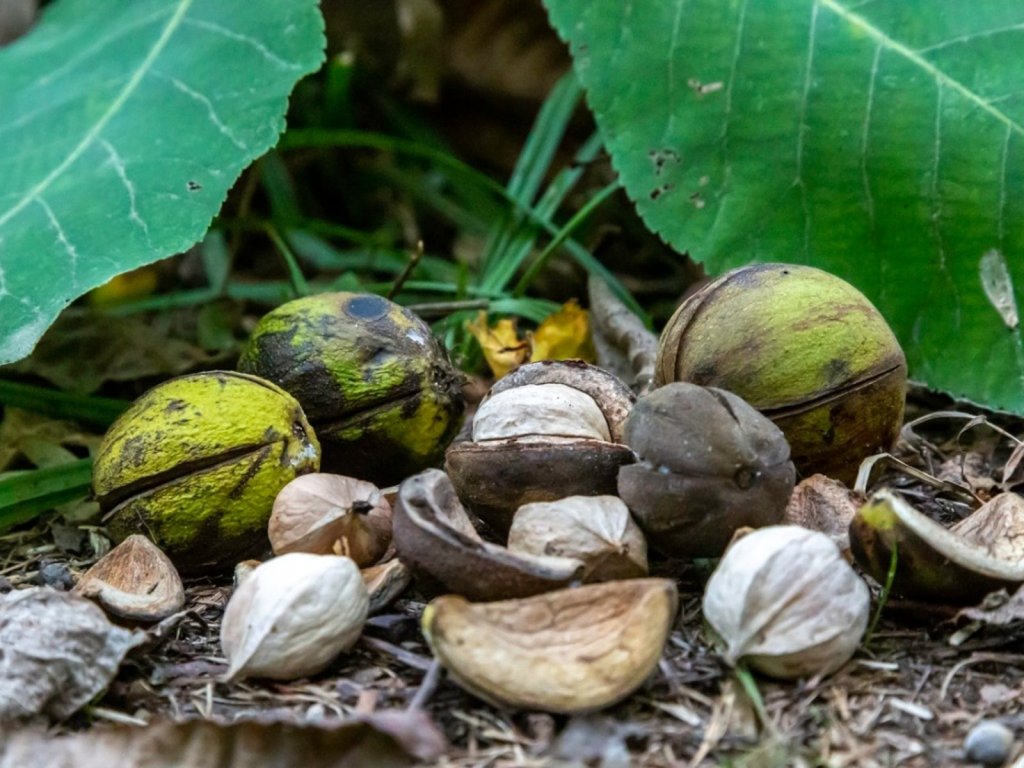Hickory trees are lovely to have in your garden or your yard. This is because of their beautiful leaves and special wood. Hickory trees are also known for their majestic presence and, in some cases, for their delicious nuts.
Some people might appreciate the shade and beauty the hickory trees provide, but others may find the abundance of hickory nuts a bit enormous. Cleaning up all those fallen nuts can be a real pain.
If you want to enjoy the benefits of a hickory tree without dealing with the hassle of collecting nuts, then you have come to the right place.
This blog will explore the various methods to prevent a hickory tree from producing nuts.
What are the Hickory Trees?
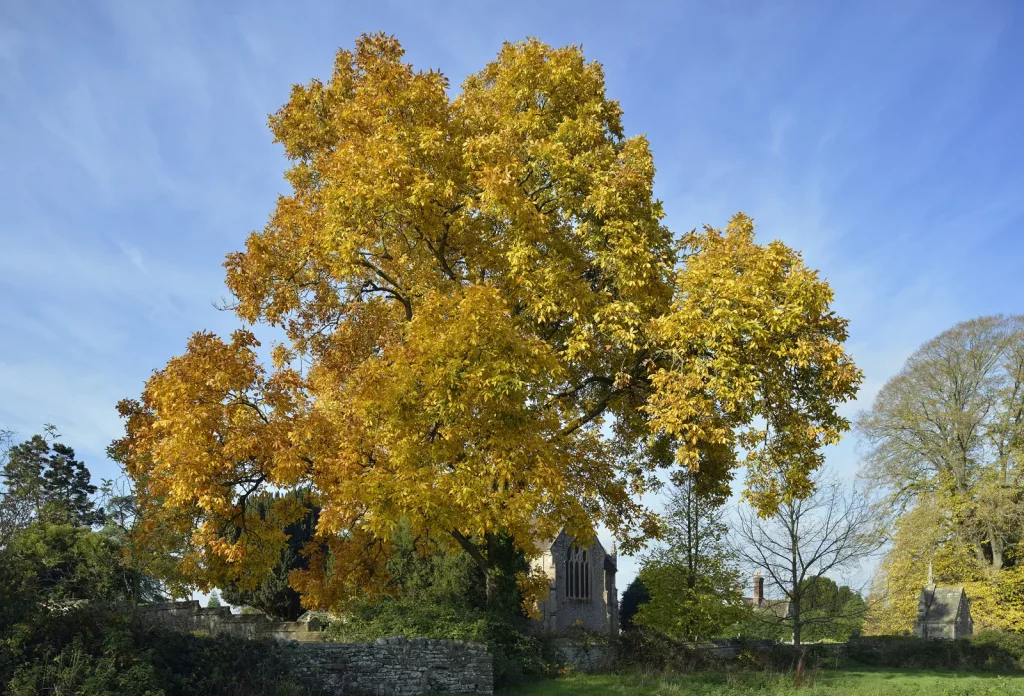
Identifying features of hickory trees include being hardwood indigenous to North America. These trees thrive in woodlands and forests and can attain impressive heights, often exceeding 100 feet. The smooth, light-colored bark is a hallmark of their appearance, offering a unique tactile experience.
The nuts of hickory trees are quite special. These nuts are edible. These nuts are not only a favorite of squirrels but also a valuable food source for humans.
Methods to Stop Hickory Trees from Producing Nuts
If you have ever had a hickory tree in your garden, you are probably familiar with the mixed blessings it brings.
On the other hand, the tree produces a lot of nuts, which makes it a challenging task to clean them. If you are tired of the constant nut collection and want to enjoy the benefits of a hickory tree without the nutty hassle, then know the following methods.
1. Choose the Right Species
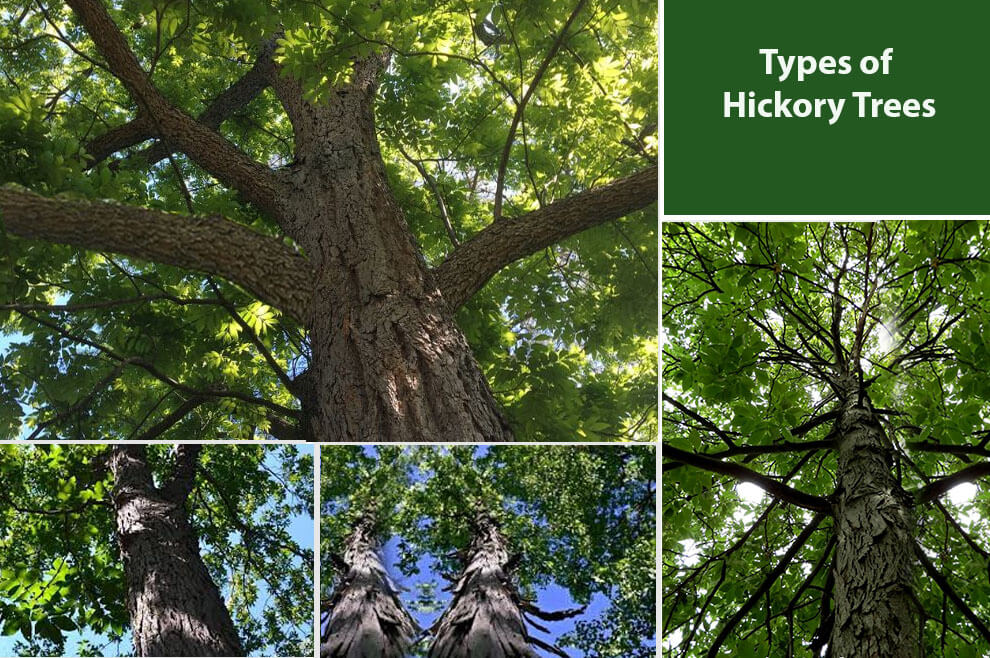
Select the right species if you haven’t planted a hickory tree yet and are concerned about the nuts. Some hickory trees produce fewer nuts than other species.
By choosing a hickory species less prolific in nut production, you can significantly reduce the number of nuts falling from the tree each year.
2. Pruning and Trimming
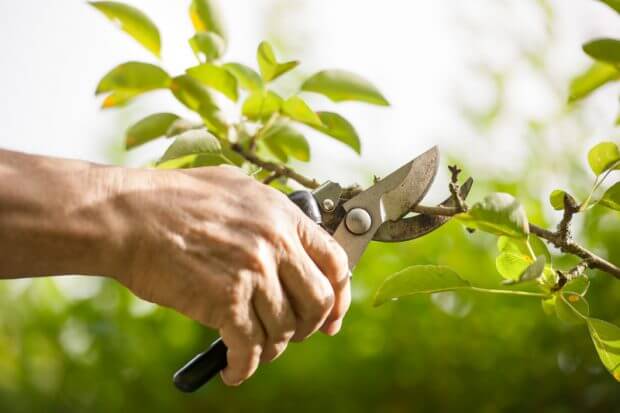
Pruning and trimming are effective methods that offer a means of managing nut production in hickory trees. These techniques involve the strategic removal of specific branches and clusters of flowers to decrease the tree’s capacity to produce nuts.
While pruning and trimming can be a valuable solution to the problem of excessive nut production, it is very important to understand the process effectively and thoroughly and execute it with care to prevent any damage to the tree.
Here is a detailed breakdown of how to prune and trim a hickory tree to control the nut production of the trees:
- Timing Is Crucial- It is essential to carry out pruning and trimming during the late winter or early spring. Mostly before the tree enters its flowering stage, this timing ensures that you intervene before the tree invests significant energy into nut production.
- Identify Nut-Producing Areas- Before making any cuts, closely inspect the tree to locate clusters of flowers or branches that have the potential to produce nuts. These are the areas to target for removal of branches where there is production of nuts.
- Select The Right Tools- To carry out the method effectively, you will need sharp and clean pruning shears or saws. Ensure that your tools are in good condition, as dull or rusty tools can cause unnecessary harm to the tree.
- Careful Removal- When the nut-producing branches have been identified in your sights, then proceed carefully to remove them. It is crucial to make clean, precise cuts to minimize damage to the tree. Begin your cut just outside the branch collar and cut at a slight angle. Avoid leaving stubs, as these can invite disease and hinder the tree’s healing process.
- Dispose Of Pruned Material- After pruning, promptly dispose of the removed branches. This step is crucial in preventing any nuts from forming on the cut branches. You can dispose of the pruned material by your local waste disposal guidelines.
- Regular Maintenance- Remember that pruning and trimming for nut control require ongoing effort. To manage nut production effectively, it may be necessary to repeat the process often in one or two years, particularly if the hickory tree continues to produce nuts despite your efforts.
It is important to note that while pruning and trimming can significantly reduce nut production, they may not eliminate it.
3. Treatment with Chemicals
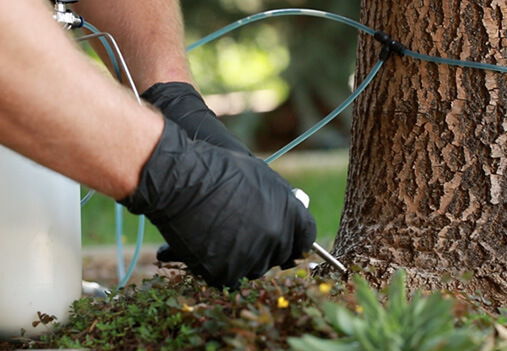
Another method is the chemical treatment. Using chemical treatment, you can stop your hickory trees from growing nuts.
The prevailing chemical component used for this purpose is the “Ethepon.” Ethrpon is like a “Stop” sign for the trees. It tells the trees not to make any more trees by affecting a special hormone inside the tree. This chemical is usually put in the tree during spring before the tree starts making nuts.
It should be remembered that using chemicals can harm our environment, so we should use them when urgently needed, and no other methods succeed.
Conclusion
Hickory trees are a beautiful addition to any landscape. But their prolific nut production can be a concern for some property owners.
If you have a small hickory tree and are willing to put in some effort, hand-picking the nuts is the best idea.
You can also add bird or squirrel feeders, as the hickory nuts are a valuable food source for many species.
This way, you can limit the falling of the nuts into the ground, making the cleanup more manageable.
While this method won’t prevent nut production, it will produce the nut collection easier and keep your yard tidy.
This will effectively manage your nut production and allow you to enjoy the benefits of a hickory tree without the hassle of excessive nuts.

